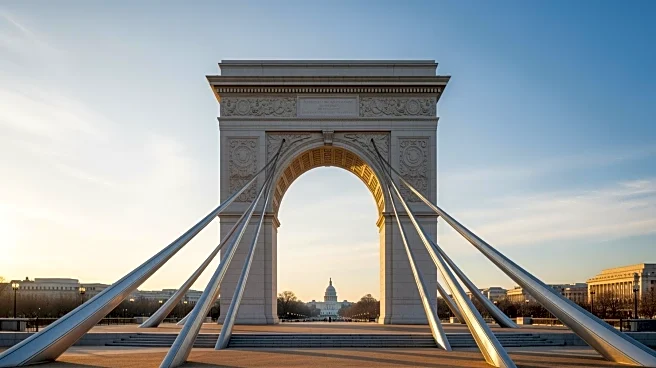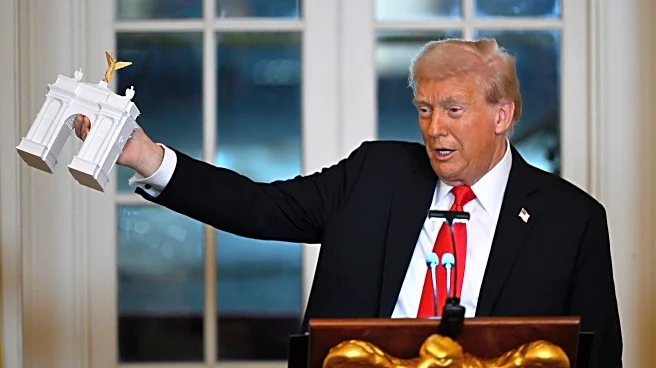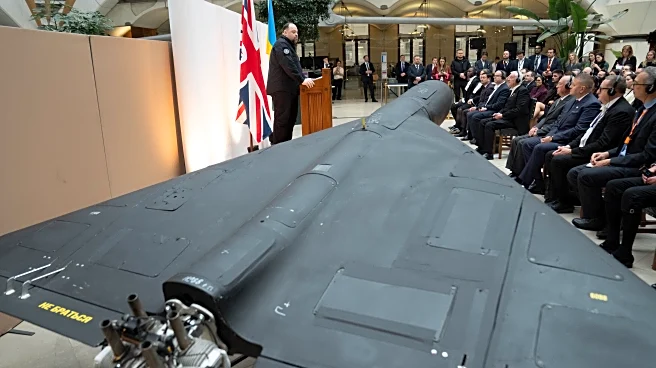What's Happening?
President Trump has unveiled a new real estate project, proposing the construction of a giant arch reminiscent of Paris's Arc de Triomphe. The arch is intended to serve as a gateway to Washington D.C.,
located across from the Lincoln Memorial and accessible via the Arlington Memorial Bridge from Arlington National Cemetery. This announcement was made during a dinner in the East Room, where Trump thanked donors for their contributions to his $250 million ballroom project at the White House. The ballroom, which Trump has long advocated for, is intended to host large gatherings such as state dinners, replacing the tents used in the past. The ballroom project is reportedly fully financed by private donors and Trump himself, with some funds left over for future projects, potentially including the proposed arch.
Why It's Important?
The proposed arch project reflects President Trump's continued interest in real estate and architectural endeavors, which have been a hallmark of his career. The arch could become a significant landmark in Washington D.C., potentially enhancing the city's cultural and historical landscape. The involvement of major corporations such as Lockheed Martin, Palantir, Google, Meta, and Amazon in the financing of the ballroom project underscores the intersection of politics and business, highlighting the influence of corporate donors in political initiatives. The ballroom itself represents a shift in how state functions are hosted at the White House, potentially impacting the tradition and formality of such events.
What's Next?
While the ballroom project is fully financed, details regarding the arch's funding, permits, and construction timeline remain unclear. The White House has not provided further information on these aspects. The project's progression will likely depend on securing necessary approvals and funding. Stakeholders, including political leaders and corporate donors, may play a role in advancing or modifying the project. The arch's potential impact on Washington D.C.'s infrastructure and tourism could prompt discussions among city planners and historians.
Beyond the Headlines
The proposed arch project raises questions about the role of private funding in public infrastructure and the influence of personal interests in presidential initiatives. It also touches on the cultural significance of architectural symbols and their ability to shape national identity. The project may spark debates on the preservation of historical sites and the integration of new structures within established landscapes.













